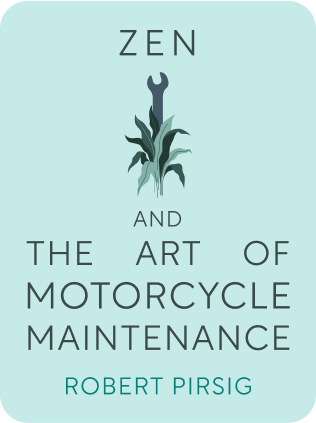

This article is an excerpt from the Shortform book guide to "Zen And The Art Of Motorcycle Maintenance" by Robert Pirsig. Shortform has the world's best summaries and analyses of books you should be reading.
Like this article? Sign up for a free trial here .
What is the journey of life? How does Robert Pirsig explain this idea in Zen and the Art of Motorcycle Maintenance?
In Zen and the Art of Motorcycle Maintenance, Robert Pirsig uses his motorcycle road trip to help explain the journey of life. He talks about life philosophy, family, and how to find meaning.
Read more about Zen and the Art of Motorcycle Maintenance and the journey of life.
The Journey of Life Begins
The book opens in the height of summer with Pirsig on his motorcycle, his son, Chris, seated behind him. They’re riding from Minneapolis to Montana alongside Pirsig’s friends, John and Sylvia Sutherland; when we join the travelers, they’re on a two-lane road somewhere in western Minnesota. Pirsig catches sight of a red-winged blackbird taking flight and points it out enthusiastically to Chris, but Chris, who’s 11, isn’t very impressed. Pirsig theorizes that the reason he’s so taken with the surroundings is because they’re bound up with his memories, memories Chris doesn’t have. This is all a part of the journey of life.
Chautauqua: Motorcycle > Car
Pirsig follows a description of his memories—of the sights, sounds, and smells of the cold Midwest mornings of his past—with a riff on the superiority of motorcycling to car driving.
In a car, we see the world through the frame of the windows. We’re sealed off from the scene around us, and we watch the passing signs much like we watch TV: passively, comfortably, disinterestedly.
On a motorcycle, however, we are in the scene: the road in all its solidity rushes by just a foot beneath us; the wind whips us; the sound of the engine is loud in our ears. Whereas riding in a car separates us from the world, traveling on a motorcycle is holistic—it places us in immediate contact with the world.
Chautauqua: Making Good Time vs. Making Good Time
Although the final destination is Montana, Pirsig tells us that he and his compatriots are traveling more or less for travel’s sake. Thus, rather than ride on freeways, they try whenever possible to stay on local roads. Pirsig calls this making good time—that is, relishing the experience of traveling no matter how long the journey takes (as opposed to making good time—that is, reaching your destination as quickly as possible). The difference in emphasis—on the quality of the time spent rather than its quantity—is what Pirsig wants to highlight. Investing in quality is also an important part of the journey of life.
Chautauqua: Why Chautauqua?
Pirsig chooses to call his ruminations in the book a Chautauqua, which refers to a traveling tent show popular in the late 19th and early 20th centuries that featured an array of speakers and exhibits. Not only does this reference call to mind a bygone era, when knowledge circulated more slowly and deliberately (see “Chautauqua: Making Good Time vs. Making Good Time”), it also highlights the fact that Pirsig’s narrative has moral as well as entertainment value all while discussing the journey of life.
Shortform note: Pirsig uses the term “Chautauqua” in two distinct senses throughout the book. Sometimes he uses it as a catchall term for his philosophical project—in other words, he considers all his discourses combined a “Chautauqua”—and other times he uses it to denote specific discourses on specific topics. To keep consistent, we’ve decided to use the term in the latter sense. When we refer to more than one discourse, we use the plural: Chautauquas.
The group pulls over at a rest stop to stretch their legs, and Sylvia, recalling the cars they’d passed going in the opposite direction, comments on how sad their drivers looked; she even compares the stream of cars to a funeral procession. Pirsig replies they were just normal people on their way to work on a Monday morning.
The conversation then turns to the natural wonders Pirsig was picking out as they rode, the blackbirds in particular. John returns from pumping water and begins rummaging through the saddlebags attached to his motorcycle. Removing a random assortment of objects—rope, matches, shoelaces—he’s exasperated at how much they’ve packed and wonders aloud if they’ll ever actually need shoelaces. Pirsig deadpans that shoelaces can break at any time. The group saddles up and rides off to continue pondering the journey of life.

———End of Preview———
Like what you just read? Read the rest of the world's best book summary and analysis of Robert Pirsig's "Zen And The Art Of Motorcycle Maintenance" at Shortform .
Here's what you'll find in our full Zen And The Art Of Motorcycle Maintenance summary :
- How an unnamed narrator and his son are on a cross-country motorcycle journey
- Why technology can be creative
- How to focus on what's in front of you in order to get exactly what you need






